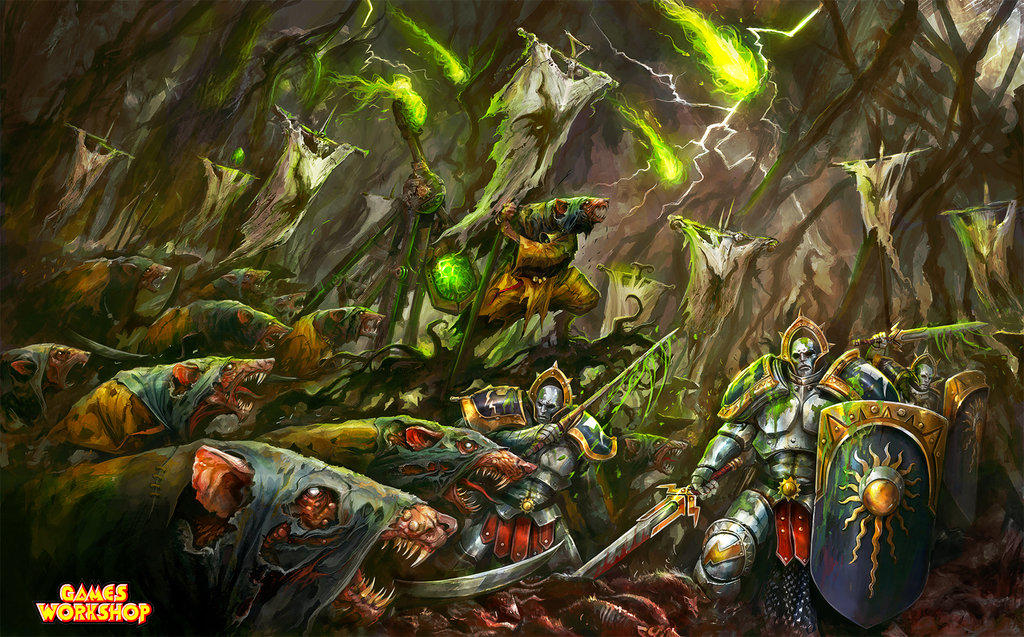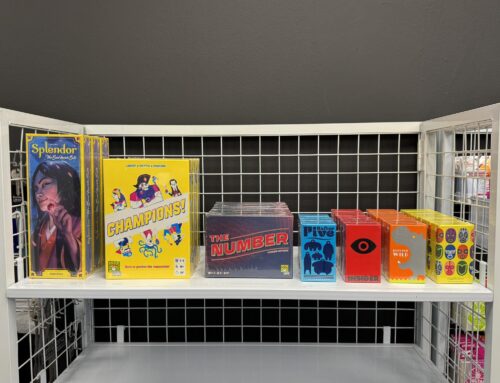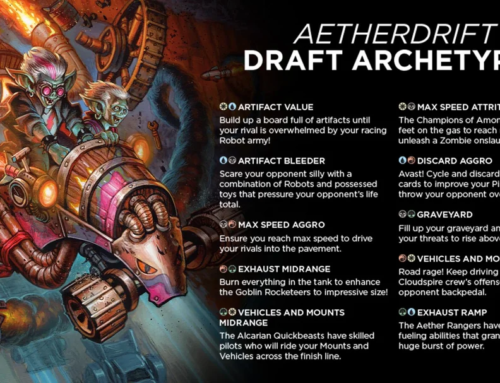There is a tradition amongst members of the tabletop wargame community to start new armies with the new year, and here at Games@PI, our staff took it upon themselves to keep with that tradition.
Helped along by our New Year, New Army discounts, our staff and regulars began to work on armies for Warhammer Age of Sigmar. Warlords rallying troops to their banner and outfitting them in regimental colours.
Today’s article will feature two of these armies, both made by members of our staff.
Shane – Skaventide

There’s something charming about a chittering massed horde of verminous rat-men, toting unstable weaponry powered by glowing green rocks. A disgusting sort of charm which makes you want to hoist out a massive box of rats and squeal “Kill-kill the man-things!”.
I’ve always wanted to start a Skaven force, perhaps it was the hilarious portrayal of them in Warhammer Fantasy Roleplay where you could play a full Skaven party (which would most likely end in everyone stabbing their friends in the back), or the oddly cute swarms of them in the Vermintide video game. Either way, these swarms of murderous rat have become my first force for Age of Sigmar and my new army for the year.
Behold the Skaven of the Ruinhearth Swarm. An alliance of minor clans that have claimed a stretch of the sun-scorched plains of Aqshy, scavenging for valuables amongst the ruined battlefields to fuel their engines of war. Though only dregs picking through the corpses of forces far greater than their own, the Ruinhearth Swarm have great aspirations. Aspirations of earning the blessing of the Great Horned Rat and taking all that is rightfully theirs.
The force is based around a number of older models, I started with a Spire of Dawn box set for the 20 Clanrats, using Spiteclaw from Warhammer Underworlds as my Clawlord. With a box of Plague Monks and ten Skryre Acolytes thrown in, this force of 61 models adds up to only 500 points.

Painting the Skaven seemed a daunting prospect. Most of my previous armies were small in size with my largest force, the Adeptus Mechanicus of Mars, being focussed on large elite models rather than massed infantry. Contrast paints were the answer, allowing me to paint batches of 10 or more models at a time.
While red is a consistent colour present across all the units in my force, they don’t bear a consistent colour scheme. Instead, I opted to mix things up, with greens, yellows, and brown cloth colours being present across my mass of Clanrats to represent their ragtag origins.
This infestation of rats will not stay small for long, I have a large backlog of models waiting to be added to the force. War-machines of Clan Skryre and the twisted experiments of Clan Moulder will arrive soon as reinforcements, heralded by the tolling of a great bell.
Kenneth – Stormcast Eternals

“GROUND MARINES! CHARGE!”
Okay…
Memes aside, my staff took it upon themselves to let me know in uncertain terms that as the general manager of a game store, I don’t get in enough game time. Some wrangling and a few physical threats later, I ended up having a box of Liberators thrust into my hands and the rest was history.
So… What do you do with a box of Stormcast Eternal Liberators?
Well, I’ve always been a fluff person, so my approach to building an army was simple – “How do I tell a good story?” And thus were born the Ashen Cantors Stormhost.
Deep within Ulgu, Realm of Shadow, lies the Mistfell Depths and the ancient bastion of Shadewatch, a twisting bulwark of penumbral gloom and ancient secrets. Charged with the defence of this antediluvian fortress are the Stormcast Eternals of the Ashen Cantors, inheritors of an ancient undertaking of which even the Storm God himself will not speak.

In my mind’s eye, the Ashen Cantors sort of build themselves. They’re a dour lot, tasked with maintaining ancient wards, both Arcane and Divine in nature, so this calls for both Priests and Wizards.
My choice of warlord was easy. The easy solution would have been to reach for a Lord Arcanum, but the Lord Exorcist has his own charms, and the ‘Ghostbuster Pope’ look of the model (the negative space of the Lord Exorcist’s helmet is basically a mitre) tells a story of the Ashen Cantor’s constant run-ins with the restless dead.
After that, it was a matter of filling out the shield wall. Being a defensive garrison means we’re going deep on Liberators with Shields. A ten-man squad (which the Ashen Cantors call a Choir) from the basis of the force, allowing me to experiment with other fancy options, knowing I’ve got a rock-solid baseline unit which I can rely on to do their job.
Next came the second Battleline squad with a Chorus of Judicators. Multiple Choirs working together form a Harmony and a combination of resilient shield wall and archers look like the core of an up and coming force.
So much like eating your veggies, that’s the Battleline done. There’s plenty of options going forward, but those who know me know I’m never going to turn down artillery support. This, of course means Ballistae (plural). They’ll never know what hit them.
What’s Next
More armies are being rallied as well, some by our regulars and others by our part-timers. In future instalments of this series, we’ll be featuring more of these regiments and the battles they take part in, along with the growth of existing forces.
You can join in the fun as well, come down to the store and build your armies alongside us. The Warhammer Start Collecting kits are a great place to start and if you’re looking for one not on the shelf, you can place an order with us.





